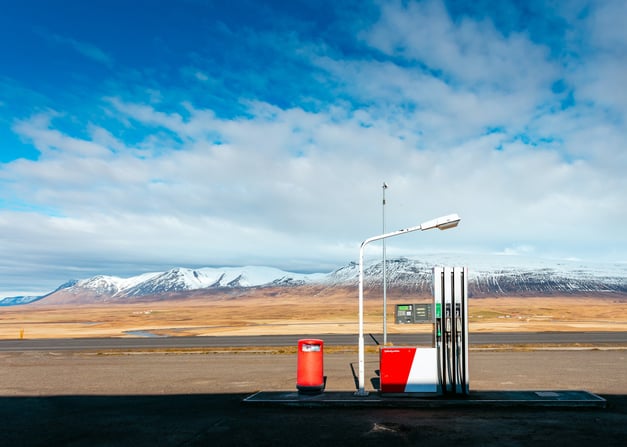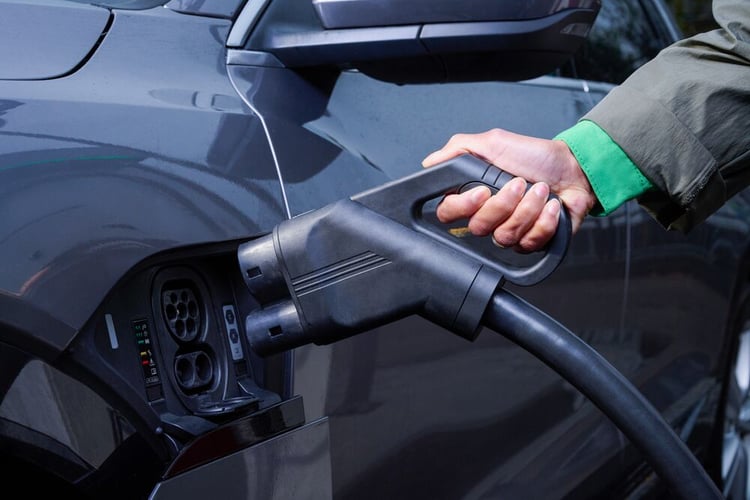
The transition in transport to electric mobility is undoubtedly happening, and petrol stations are stuck in the middle of it—whether they like it or not. Today, there are already over 10 million electric vehicles (EVs) registered on the roads, and according to the International Energy Agency, that number is expected to rise to 145 million by the end of the decade.
At the same time, the world is in the midst of a ‘hydrogen gold rush’, with many governments tipping the gas to become the next big thing. And then comes the efforts to reduce carbon emissions produced by traditional fossil fuels by infusing them with biofuels.
With these investments, we are moving forward towards a more sustainable and energy-efficient transportation system. But what does this future mean for petrol stations? And will there be more emphasis on electricity, hydrogen or biofuels?
These are the questions on many fuel retailers' minds. And while only time will tell, one thing is for certain: standing still means going backwards in this dynamic sector. It is therefore important to understand exactly what these alternative fuels are, and what impact they can have on the transportation system.

Petrol stations have always had to adapt to survive
Petrol stations have traditionally always adapted to market movements. Prior to the modern petrol station we know now, few people left their vehicles as it was a legal requirement to have an attendant fill the customers car.
When regulations changed, and self-service was possible, people began to venture into shops and the petrol station/shop combination became more common than not. As time went on, a range of additional services—from car washes to air and water machines—were introduced.
As convenience continued to be prioritised to match society’s demands and the passenger vehicle grew to dominate how we got from A to B, fuel retail became a cornerstone of the modern economy.
However, the sector has come under increasing pressure due to concerns over sustainability and many fuel retailers are already looking to understand their position in the future of transportation.
.jpg?width=6048&name=chuttersnap-xJLsHl0hIik-unsplash%20(1).jpg)
A new era for petrol stations
Today, the oil and gas industry faces more opposition than ever before. Whether it’s from the public opinion driven by the climate crisis; fallout from the numerous cover-ups on the damage of fossil fuels; or outrage over how the oil industry spent billions to control the climate charge conversion, the tide is turning for big oil.
To confront this reality, oil and gas companies are rethinking their position in the market and trying to find ways to stay relevant in the future. One key target is electric vehicle (EV) infrastructure. For example, Shell announced it will install 500,000 on-street electric vehicle charging points by 2025 and BP will increase its network of EV charging points to 70,000 points by 2030.
However, the average consumer rarely interacts with big oil companies unless they are at the pump. As a result, many are considering how their reputation will fare in this landscape, and for good reason: a recent prediction shows that fuel retail will slowly decline across mature markets. For fuel retailers, this means that business is at the front line of conversation about climate change, sustainable transport and the future of mobility as a whole, whether they like it or not.

Are hydrogen stations the future?
Hydrogen is regarded by governments and oil and gas companies as one of the key tools in the fight against climate change. But, is this going to be an important source of income for petrol stations?
What exactly is hydrogen?
Hydrogen is an alternative fuel similar to natural gas, but made through a process called steam reforming. This alternative fuel has been used for years for powering rockets and airships. As early as the 1970s, some car manufacturers viewed hydrogen as the future for all types of transport and since then, many have invested billions into the R&D of hydrogen fuel cells.
However, in the following years, hydrogen cars were never produced on a large scale due to the high production costs and the fierce competition from electric cars.
Hydrogen cars
Spurred on by the potential of green hydrogen, many car manufacturers have (again) started developing passenger vehicles that run on hydrogen. Today, there are two hydrogen models available: the Hyundai Nexo and the Toyota Mirai.
Other manufacturers, such as BMW, have plans for hydrogen-powered cars in the works, however, many projects, such as those from Daimler, Honda and Volkswagen, have been cancelled due to high costs of both producing hydrogen vehicles and extracting and transporting hydrogen itself.
So, is hydrogen going to be a part of the future for passenger vehicles? To demonstrate an answer to this, Volkswagen put it bluntly: “Everything speaks in favour of the battery, and practically nothing speaks in favour of hydrogen.”
Hydrogen trucks
Whilst hydrogen-powered cars are slowly disappearing from the picture only to be replaced by batteries, it is a different story for heavy transport vehicles, such as trucks. According to Munich-based automotive consultancy firm Berylls Strategy Advisors, 25 percent of new truck sales in Europe will be electric and a further 10 percent will be hydrogen fuel cell electric vehicles.
As David Cullen, a scientist for Oak Ridge National Laboratory says, “Hydrogen fuel cells are ideal for the trucking industry because the refuelling time and driving range are comparable to fossil fuelled trucks and travel routes are predictable, which lowers the barrier for developing a fuelling infrastructure.”
As a result, the potential of hydrogen in this form of transport means that it may become more common on our roads. However, while fuel cell technology continues to get cheaper and more efficient, the production of green hydrogen continues to lag behind its fossil fuel-dependent counterparts.
Is hydrogen fuel sustainable?
One major objection to hydrogen is the question of its sustainability. At the moment, the vast majority of hydrogen production (roughly 95 percent) comes from fossil fuels.
Brown hydrogen, for example, is made from the gasification of coal, and grey hydrogen from natural gas—not exactly sustainable resources. Blue hydrogen is considered a low-emission source of fuel as it captures the carbon dioxide and stores it away, however, the sustainability of this process is under debate. Green hydrogen, on the other hand, is created using renewable energy and has the potential to play an important role in the energy transition.
While green hydrogen may have the potential to be a sustainable energy source, it’s unlikely to become sufficiently available until 2023. Hydrogen heavy transport vehicles may be seen more commonly on the roads, but unless the production of green hydrogen is ramped up, it’s unlikely that this form of propulsion will overtake the position of all-electric vehicles.

What is biofuel and is it renewable?
Biofuels are created from breaking down feedstocks such as vegetable oils and animal fats, transformed into either ethanol or biodiesel, and blended with petrol or diesel to create a low-carbon alternative. In the UK, regular petrol now contains about 10 percent ethanol (E10) and some vehicles can run on up to 85 percent ethanol (E85).
Biofuels are a good alternative to fossil fuels as they are cost-effective and don’t require large investments in infrastructure. But this does not mean that they are the miracle cure.
Rather, while biofuels are considered a renewable resource—as they come as a by-product of agricultural feedstock—and thus are a more sustainable alternative to petrol or diesel, they are not carbon-neutral and must still be blended with fossil fuels.
For fuel retailers, offering biofuel as an alternative fuel is a good starting point, but it does not offer any guarantee for the future. With the transition to carbon-neutral alternatives well underway, simply offering low-carbon biofuel solutions will not be enough to service the needs of tomorrow’s customers.
%20copy.jpg?width=3240&name=Blog%206%20-%20Header%20(1)%20copy.jpg)
What does the future of petrol stations look like?
As the transport revolution ramps up, fuel retailers will have to make investments before reaping the rewards. With EVs pegged to lead the way, and both hydrogen and biofuels on the radar, they are faced with a difficult choice.
The truth is, while alternative fuels are on their way and their development is important in decarbonising the transportation sector, electric mobility still has a clear lead. The rise of electric mobility has been rapid and is unlikely to slow down anytime soon. Driven by consumer demand, government regulations, and business commitment and opportunities, we’re likely to see more and more EVs on the roads.
For fuel retailers, while the value of EV-charging may still be negligible today, by 2030 it is estimated to be a whopping £14.55 billion according to McKinsey & Company. As a result, many fuel retailers are looking into the possibilities of EV charging for their fuel retail business.
There are, however, plenty of other players willing to tap into this revenue stream if fuel retailers decide not to move. Consulting firm McKinsey therefore urgently advised the sector: “venture beyond their traditional capabilities and act quickly to get ahead of the many different players positioning themselves for success in this rapidly evolving industry”.
Learn what EV charging can mean for your businessRead our free ebook to get a complete overview of all fast EV charging possibilities, their differences, and what fuel retailers need to look out for. |
Related articles

Is DC fast charging bad for your EV battery?
While there is research that shows that frequent rapid (DC) charging can somewhat degrade the battery quicker than AC...

5 things you didn't know about EV batteries
There’s little doubt that electric mobility is the future. Electric vehicle (EV) sales have skyrocketed in the past few...

Electric car battery weight explained
How much an electric vehicle (EV) battery weighs depends greatly on the vehicle and model. On average, however, EV...
